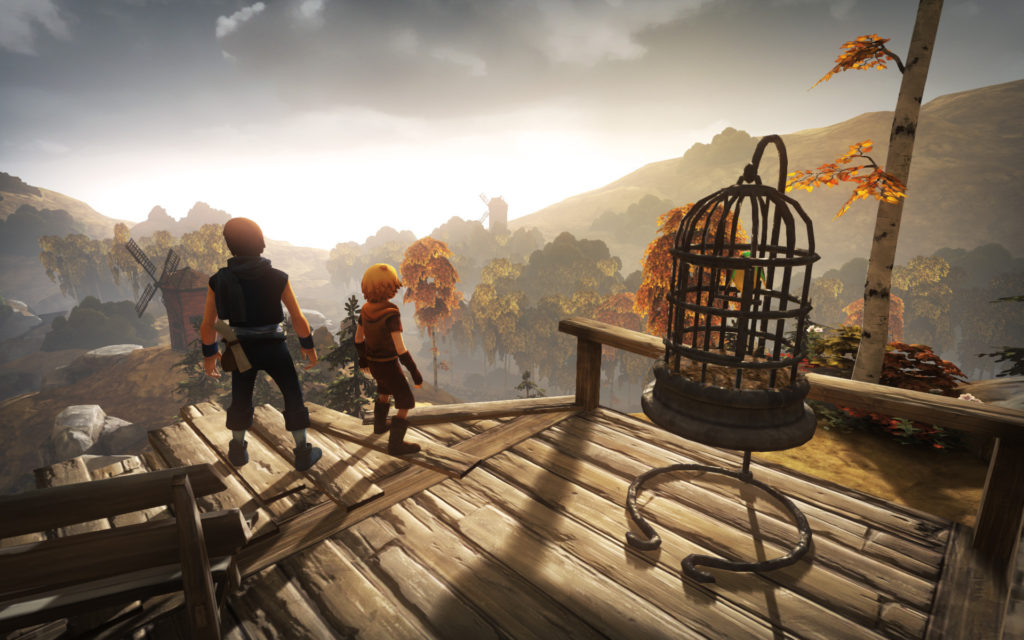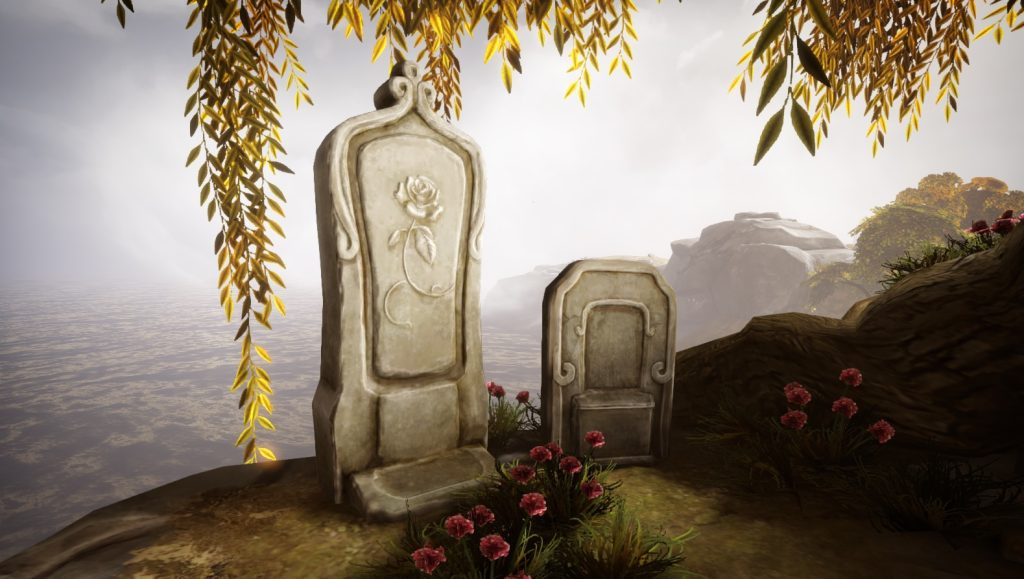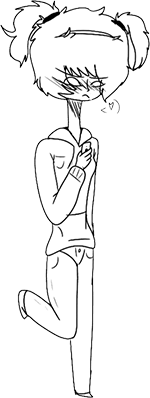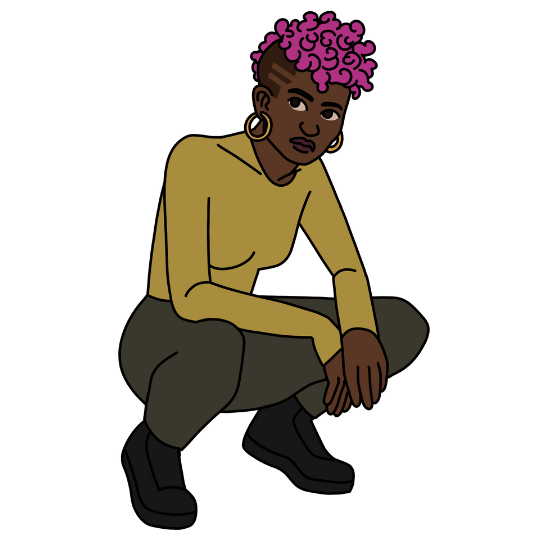A Touching Gesture: Hand Movements and Loss in Videogames
Posted: 28 Mar 2023This is an excerpt from ‘A Touching Gesture: Hand Movements and Loss in Videogames‘, written by Dr Emma Reay, shared with permission. Please click the link to read the full article. Warning: Heavy Spoilers for ‘Brothers: A Tale of Two Sons’ ahead.
It is not a linguistic accident that the words ‘touching’, ‘feeling’, and ‘moving’ have dual significance. In 1964, psychiatrist Ernst Gellhorn took the etymological link between ‘motion’ and ‘emotion’ as the starting point for his investigation into proprioception.
He wondered, “if on receiving news of a great loss one would make up one’s mind to strut back and forth with chest expanded, this posture would interfere with the development of a sad mood appropriate to the occasion.”
Video games can manipulate a player’s hands by means of the controller; does it follow that video games can communicate with the player via a somatic language? After all, the word ‘controller’ does not clarify who is in control: arguably, the video game has as much control over the player’s movements as the player’s movements have over the video game.
Brothers: A Tale of Two Sons is a moving text in more senses that one. In fact, the emotional power of this video game is inseparably tied to the hand motions required to play it. In other words, Brothers manipulates a player’s emotions by manipulating her hands. The operational controls of Brothers deviate from what one might term the ‘standard language’ of gameplay gestures. In the majority of adventure games designed for the PlayStation, the left analogue stick moves an avatar around a space while the right analogue stick adjusts the avatar’s ‘viewpoint’. Brothers, however, subverts this operational norm in order to reawaken the player to the significance of the gameplay gestures.

Just as some poetry draws attention to the surface of an utterance by violating the norms of ‘everyday’ language, the operational controls in Brothers are obtrusively irregular, and therefore demand that the player considers their full communicative potential.
The unusual two-handed gestural controls of Brothers use both synchronicity and variance to layer moments of gameplay with complex meaning. As metonyms for the two brothers, the player’s hands convey kinship, a unified will, and similitude, while the parallel gestures performed by the player express a sense of instinctive trust and mutual dependency.
However, manipulating two avatars at once is not an easy task: one’s hands naturally want to synchronise, but the game requires that they operate independently. This results in moments of frustration – the kind of frustration a young boy may feel at being told ‘he has to stick with Big Brother’, or that ‘he has to let Little Brother tag along’. It would certainly be easier to explore some of the locations using just one avatar, and, on occasion, having to split one’s focus between two avatars evokes a combination of anxiety and resentment that a boy may feel when having to constantly keep an eye on his brother.
In short, the gestural challenge of manipulating both siblings captures something of fraternal bonds: fundamental and measureless devotion combined with short-lived annoyance and exasperation. What is more, as the game progresses, the player becomes more adept at managing both avatars, which creates a sense that the bond between the brothers is growing in depth and strength. ‘Squabbles’ become less frequent and the boys seem to intuitively lean on each other as they face an increasingly hostile world.
The poetic potential of this tactile description of the brothers’ relationship is affirmed in the closing chapters of the game. When the siblings finally arrive at the enchanted tree, Big Brother is grievously ill following an encounter with a poisonous human-spider hybrid. Little Brother props Big Brother against the foot of the tree and hurries to fetch the healing elixir from a luminous, blue pool suspended in the tree’s topmost branches. Up until this point in the game, the brothers have been inseparable – the game does not permit one brother to leave the frame without the other brother; but now, for the first time, Little Brother sets off alone and Big Brother disappears from view. By the time Little Brother returns with a flask full of the elixir, Big Brother’s body has curled around his huge chest wound and he has died. A cutscene shows Little Brother desperately trying to pour the elixir down Big Brother’s throat and then howling when he realises that he is too late. At this point, the camera pulls away until the brothers are too small to see.

When the camera returns, some time has passed and Little Brother has dug a grave for Big Brother. The player must direct Little Brother to drag Big Brother’s body into the hole and cover it with earth. Little Brother’s responses to the operational controls are exaggeratedly slow, which serves to convey the character’s emotional exhaustion whilst also forcing the player to complete this harrowing ritual at a solemn pace. If the player does not apply constant pressure to the right analogue stick, Little Brother collapses to the ground, seemingly paralysed by grief. This detail transforms the player’s gestures from ‘directions’ to ‘fortification’: the player feels that she is not merely telling Little Brother what to do, but that she is supporting him in his darkest hour. The auditory and visual signifiers in this sequence connote agony and abjection: the soundscape is silent apart from Little Brother’s half-stifled sobs, and the image of a living child standing in the grave of a dead child seems to proclaim the death of hope, the death of innocence, and the death of childhood. However, running counter to these visual and auditory descriptors are the player’s gestures, which express the remarkable resilience of the spirit – the need and the ability to somehow keep moving in the wake of tragedy.
After Big Brother’s death, the lefthand half of the controller seems to ‘die’ too, in the sense that it is no longer possible to interact with the storyworld via the left stick or left trigger. The loss of the player’s left hand is a powerful description of bereavement, and tackling the final challenges one-handed expresses Little’s Brother’s vulnerability and isolation with poignancy and pathos. Little Brother’s loneliness is, in a very literal sense, palpable, in that the game takes away something from the player and instantly the storyworld becomes half as bright and half as broad. In the final sequence of Brothers, Little Brother must swim to the island where his critically ill father awaits him. A storm swells at sea and lightning cracks the night’s sky. Little Brother has a morbid fear of open water that stems from having witnessed his mother drown at sea, and so previously in the game he has clung to Big Brother’s back when the two have had to cross a stretch of water. A short cutscene informs the player that if Little Brother does not reach his father soon, he will lose the opportunity to save the life of the only family member he has left; however, if the player tries to make Little Brother swim to the island, Little Brother refuses to go more than waist-deep into the dark, choppy water. This prompts the player to look for alternative routes to the island but, finding none, the player is eventually forced to return to the water’s edge. In desperation, the player may start randomly pressing buttons on the controller in the hope that one combination will impel Little Brother to swim.

If the player presses the left trigger, which has been redundant since Big Brother’s death, the player will hear the gentle voice of Big Brother whispering soft words of encouragement to Little Brother. The camera zooms closer to Little Brother as if the player had taken a sudden step towards him, and the controller starts to vibrate as if a mute force were urgently trying to communicate. Strengthened by this moment of spiritual intervention, Little Brother finds the courage to plunge into the water and splash frantically and ineptly to the opposite shore.
It is a bittersweet moment of gameplay that invites feelings of pride and relief, mixed with a renewed sense of the enormity of Little Brother’s loss. Little Brother’s journey to the island only achieves its full poetic significance in the moment the gameplay gestures are performed. The sense of urgency and panic is engendered by the player’s rapid and repeated clicking, and the feeling of futility is created by the player’s failed attempts to solve the puzzle. Furthermore, because the game requires the player to explore and experiment – even to the point of despair – before discovering the momentary and surprising ability to invoke Big Brother’s spirit, the unexpected resurrection acquires a miraculous quality and the player’s operational gesture becomes a description of love’s final triumph over death.
To return to Gellhorn’s example of strutting back and forth to keep grief at bay, Brothers actually induces grief by paralysing one hand and by physically shrinking and crippling the player’s ability to move. The player can, as this essay has, unpick this gestural metaphor; however, they may find the ending of Brothers is a bruise too tender to probe with words.
This is an excerpt from ‘A Touching Gesture: Hand Movements and Loss in Videogames‘, written by Dr Emma Reay, shared with permission. Please click the link to read the full article.
Read more of Emma’s writing here.
In this series of Reflections, Emma Reay will examine a selection of contemporary videogames that speak to some of the concerns at the heart of the Death Positivity movement. Proponents of Death Positivity seek to normalise and demystify death by encouraging open, honest discussions about mortality. Videogames are an important part of these discussions – not just because they dominate modern media ecosystems, but also because they provide a new language to communicate ideas about death. This language combines rules-based interactions with haptic gestures to offer a different vocabulary to describe our shared vulnerability, impermanence, and corporeality.

